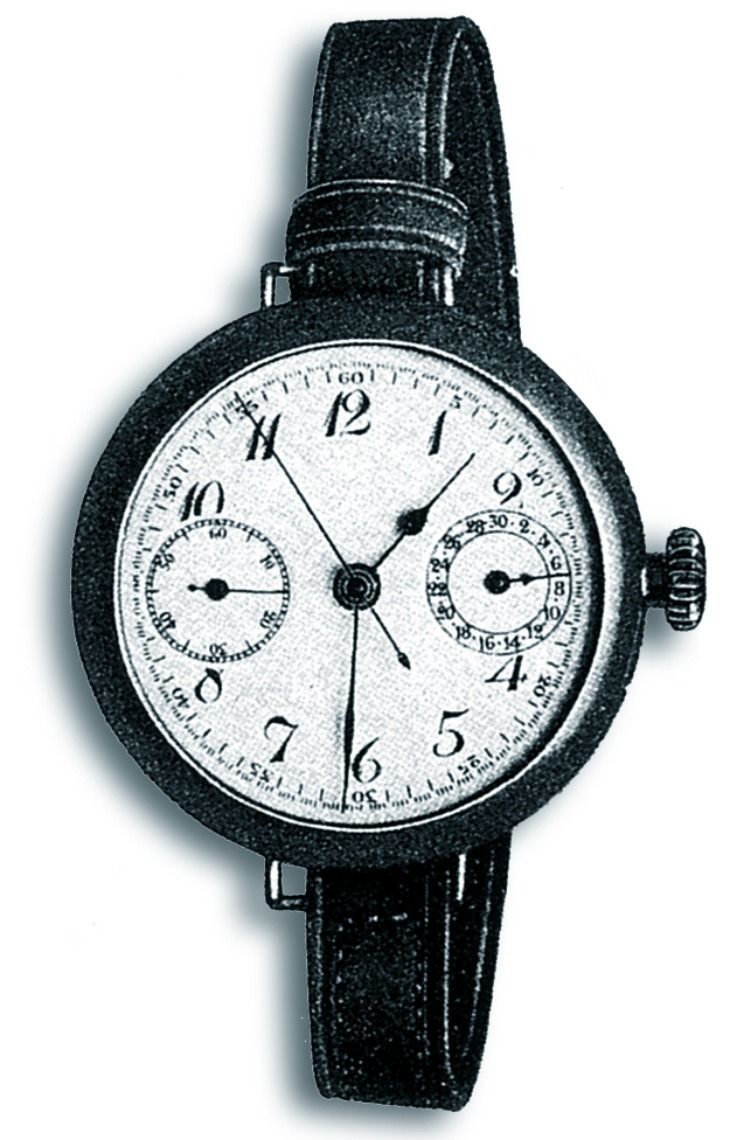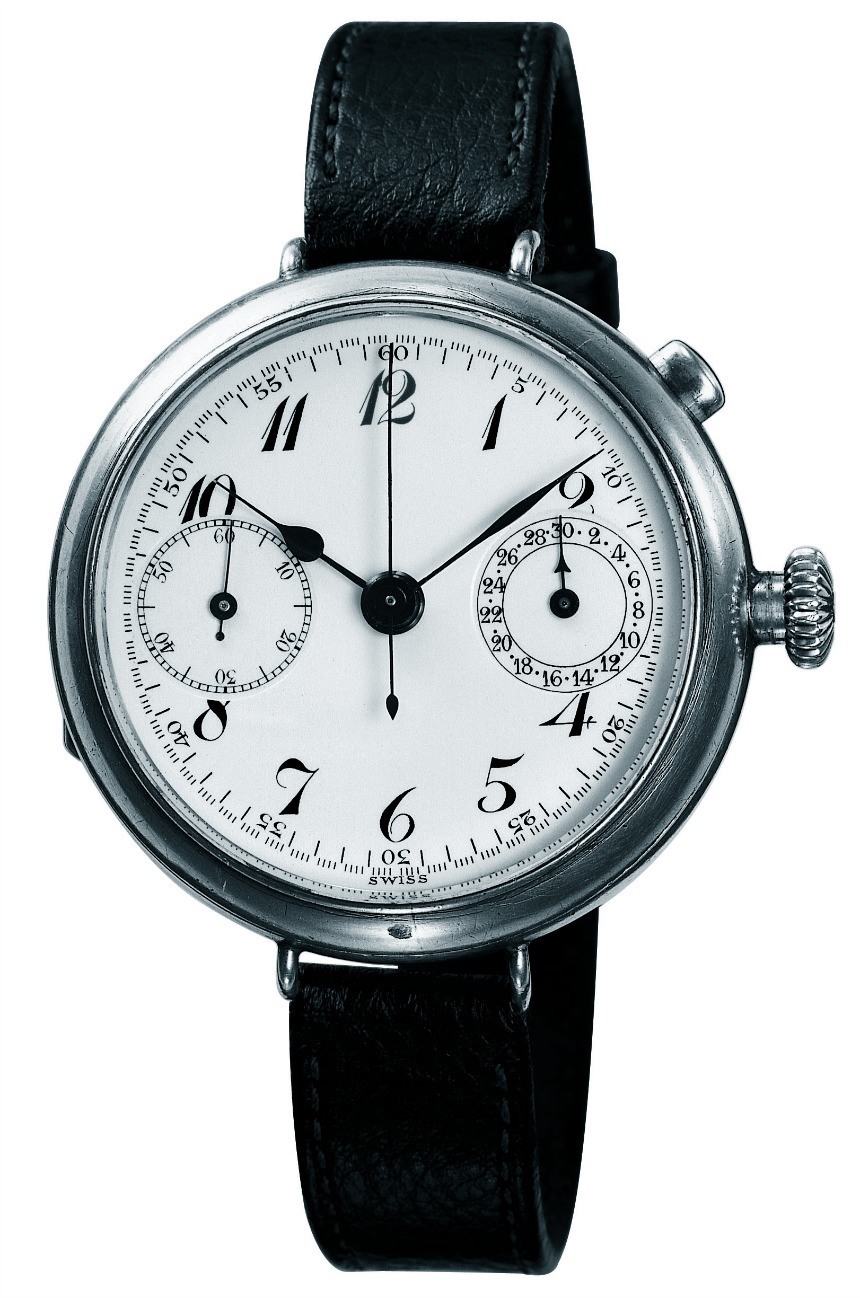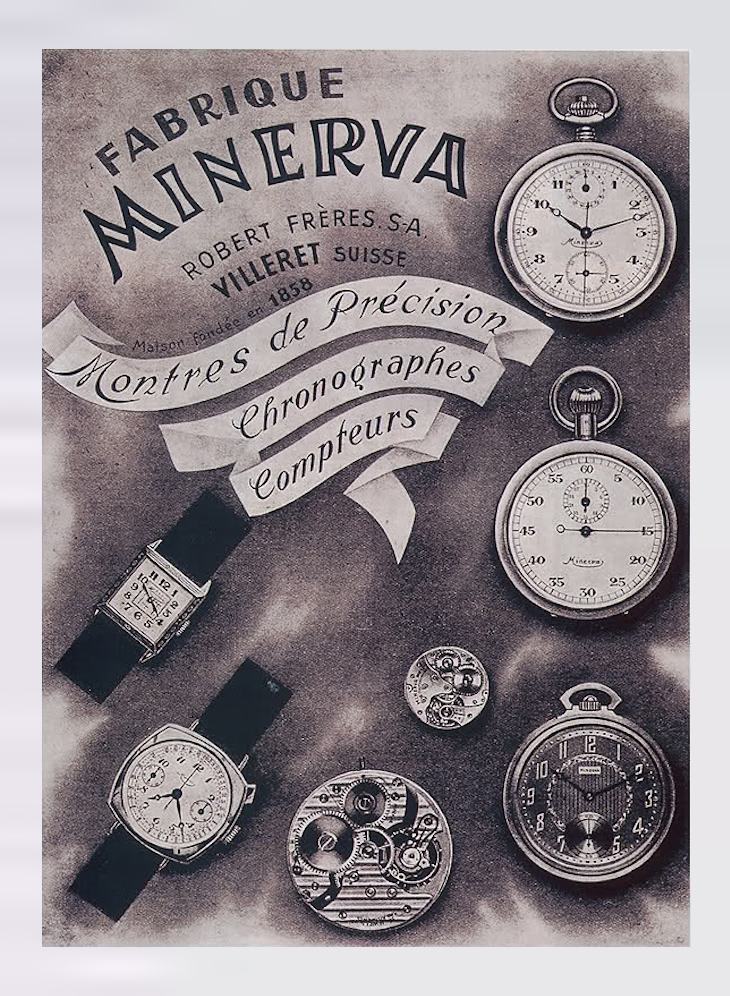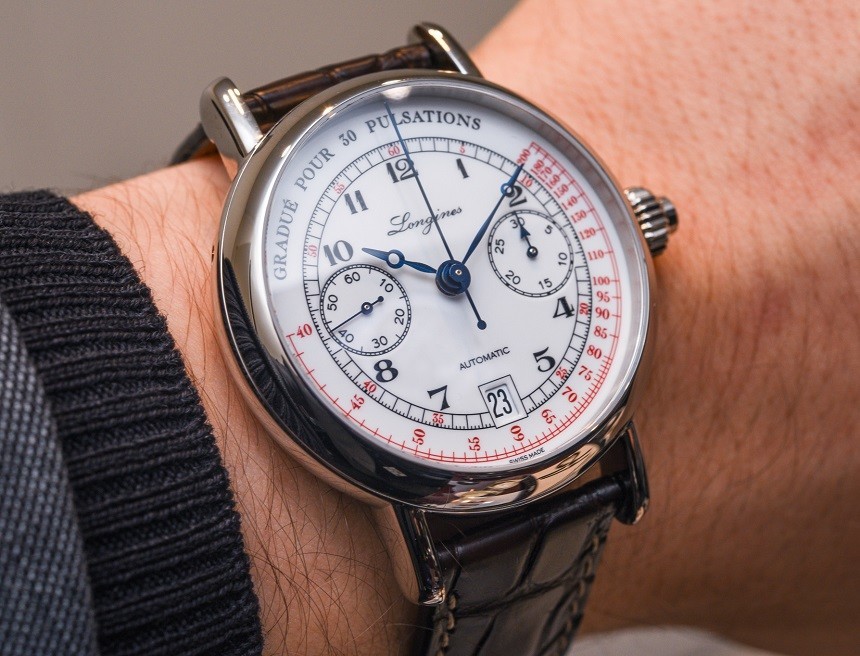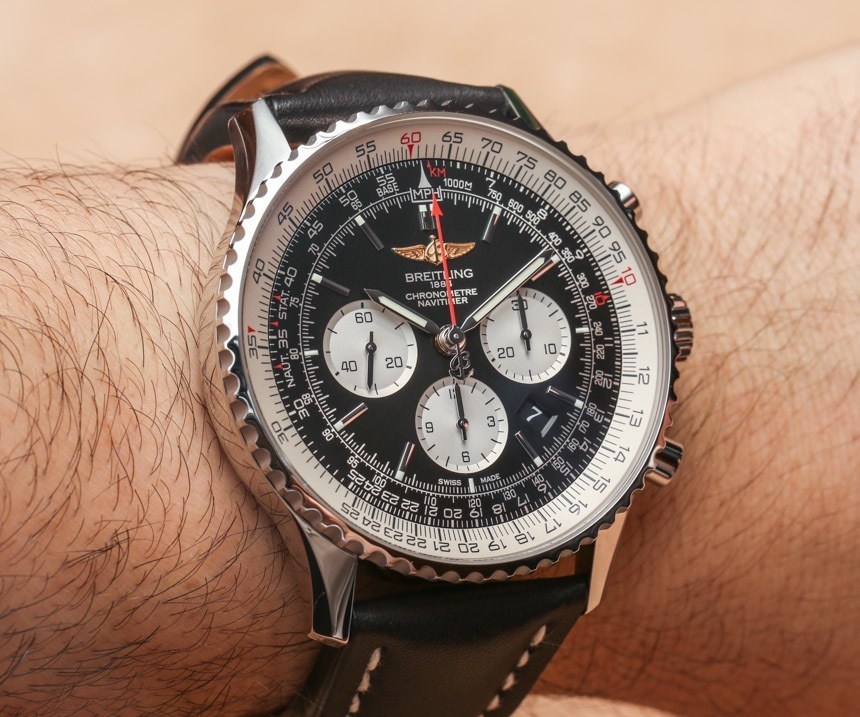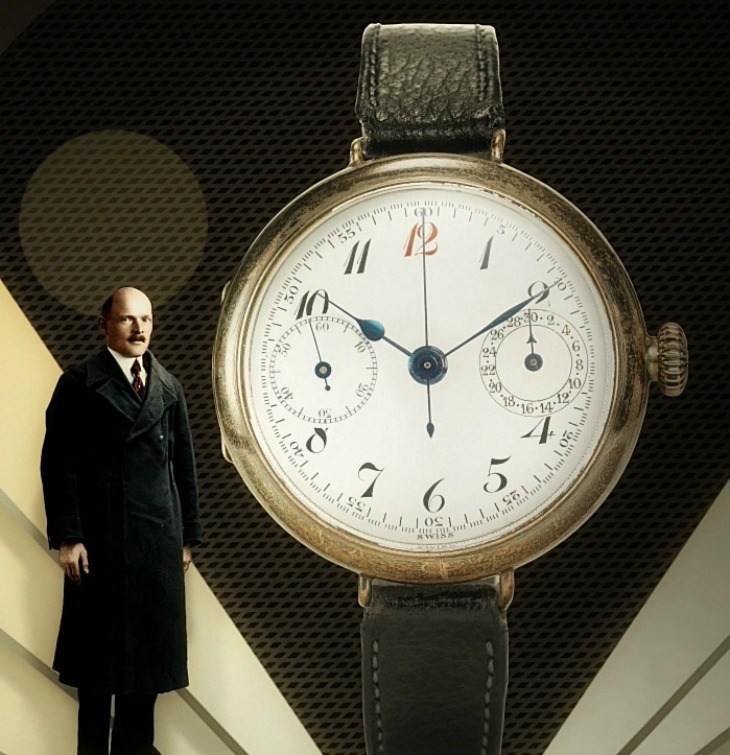
“Not just a chronograph, Ariel, but a monopusher chronograph!” I’ve heard phrases such as this over the years in the context of watch brands showing me their new single pusher (monopusher) chronograph watches, and I’ve never felt comfortable hearing how we should be impressed by one- versus two-pusher chronographs. Why is it, exactly, that brands feel the need to lie to us about how monopusher chronograph performance compares to the more modern two-pusher chronograph complication?
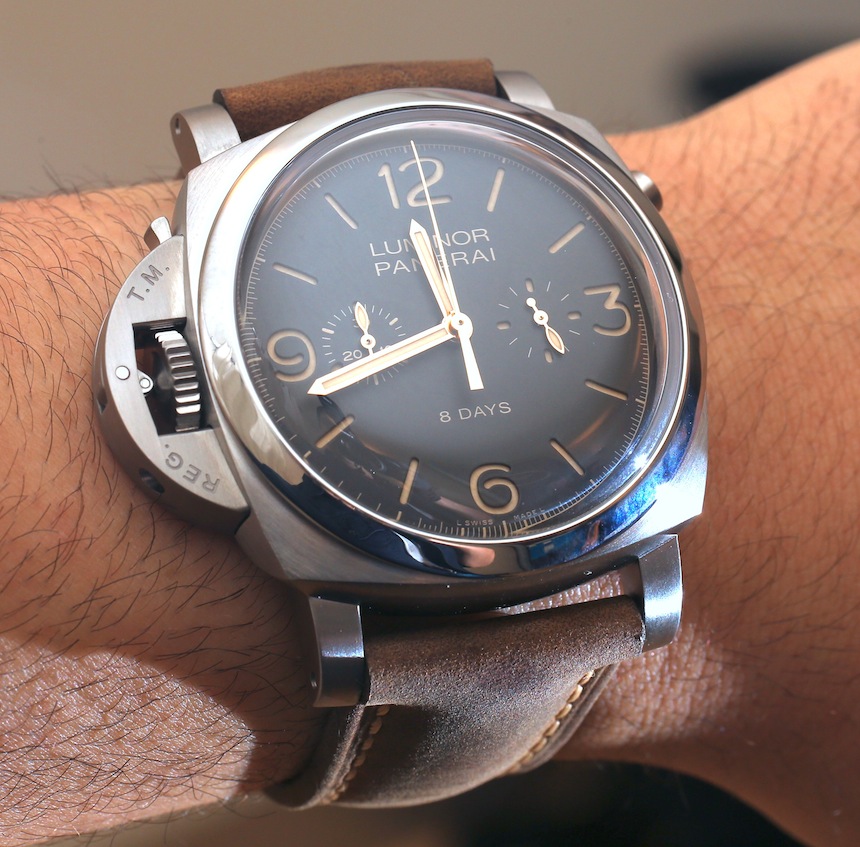
I don’t really know the answer to that question. Perhaps some of the people who are telling me this information don’t themselves understand that monopusher chronographs are an earlier, more primative form of chronograph compared to a two-pusher chronograph system. It is also possible that because so many chronographs today rely on the popular two-pusher system, they feel it is worth noting their exception.
All of this got me thinking about when the two chronograph pusher system started – at least in the scope of wrist watches. The history of the chronograph itself is rather interesting. For the longest time, it was thought that Nicolas Rieussec invented the chronograph in 1821. In France, Rieussec invented a time measuring box that literally wrote on paper in order to help time horse races. In 2013, the horological world needed to re-write history because it was discovered that Rieussec did not invent the chronograph (much to Montblanc’s chagrin). Rather, it was the celebrated watch maker Louis Moinet who invented a stopwatch-style pocket watch in 1816 (discussed by me here on Forbes). Louis Moinet’s device ironically had a primitive reset function pusher in addition to the start and stop pusher. Nevertheless, this was not combined with a time telling mechanism, and certainly wasn’t part of a wrist watch.
“Chronograph” literally means “time writer” – probably because of Rieussec’s invention that literally wrote on paper. Funny enough, in the world of watches, many people with limited timepiece experience mistakenly believe that a “chronograph” is just another name for a watch. That isn’t true. A “Chronometer” is a better term for that, even though in the watch world, Chronometer is the term applied to certain watch movements which are certified by COSC for having a requisite level of accuracy. More traditionally, chronometer was used as a term for especially accurate scientific and navigational clocks. But I digress…
For many years, chronograph complications on pocket watches (and later, wrist watches) used a single operating pusher to perform three tasks. In order for a single pusher to do three things, it merely cycled through starting, stopping, and resetting the chronograph function. That meant that a user could not pause timing something. If they stopped timing an event, then they needed to reset the chronograph before resuming their timing of that event. Thus, you can see that monopusher chronographs are more limited in their functionality than two-pusher chronographs. That is because in the modern standard two-pusher system, one pusher can be used to start and stop the chronograph multiple times, while a separate pusher is used to reset it.
In 1913, Longines was the first company to produce a wrist watch chronograph. The topic of the world’s first chronograph wrist watch is something we discussed more in our Top 10 Technically Important Mechanical Wrist Watches article here. Soon after, in 1915, Breitling produced their own version of a wrist watch chronograph – does it surprise you that it looked rather similar to the Longines? Most early watches looked similar. Think of how amazing it would have been if the wrist watch chronograph had instead debuted in 1916, exactly 100 years after the invention of the chronograph… that would have been one hell of a press release.
The reason I brought up Breitling in addition to Longines is because while they didn’t invent the first wrist watch chronograph, they did invent the first two-pusher wrist watch chronograph in 1934. That is almost 20 years after they debuted their wrist watch chronograph – I wonder what took so long and why no one else thought of this until then? One issue, of course, had to do with watch makers wanting to put as few holes in a watch case as possible because that is how dust and water can enter. Other than screw-down pushers, there was no real gasket technology available in watches. For this reason, I believe you see many monopusher chronograph pushers integrated into the actual watch crown.
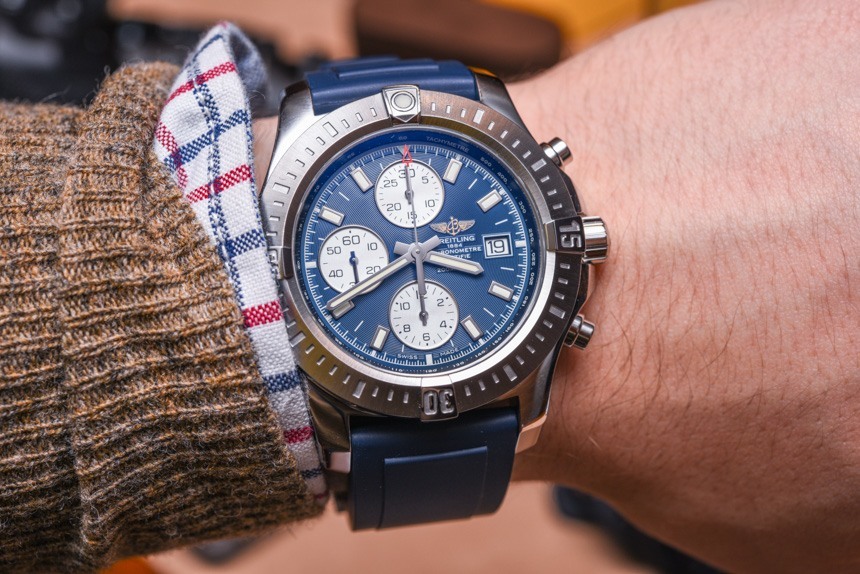
Breitling refers to their 1934 innovation as a “second return to zero pushpiece.” The idea here is that rather than having a single pusher to start, stop, and then reset the chronograph, two pushers would be used. In this layout, one chronograph pusher is used to start or stop the chronograph, and the other pusher is used to reset the chronograph to the zero position.
Resetting the chronograph with this system can only be done when the chronograph function is stopped. A later innovation known as the “flyback chronograph” added the final level of functionality which allows the user to instantly reset the chronograph while it is in operation (without having to stop it first). Flyback chronographs are particularly useful for those looking to recording events in quick succession. Apparently, it was also Breitling who invented the first flyback chronograph watch in 1923 – but it isn’t clear whether or not it was a wrist watch. I don’t believe it was. Longines, however, was the first to patent the concept, and they released the first flyback chronograph watch in 1936.
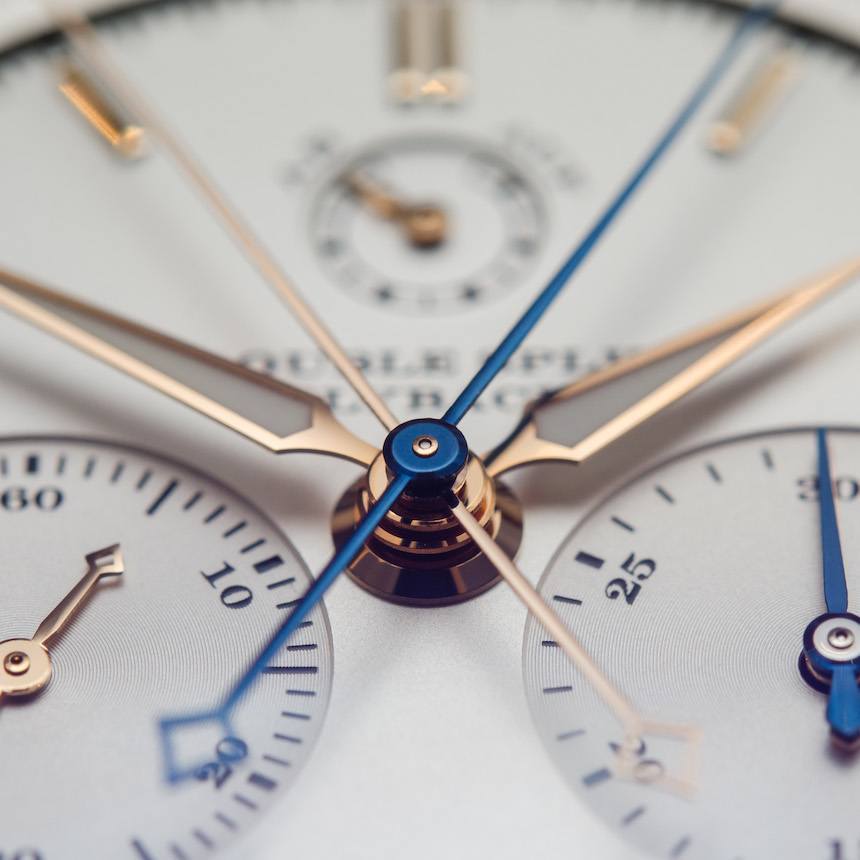
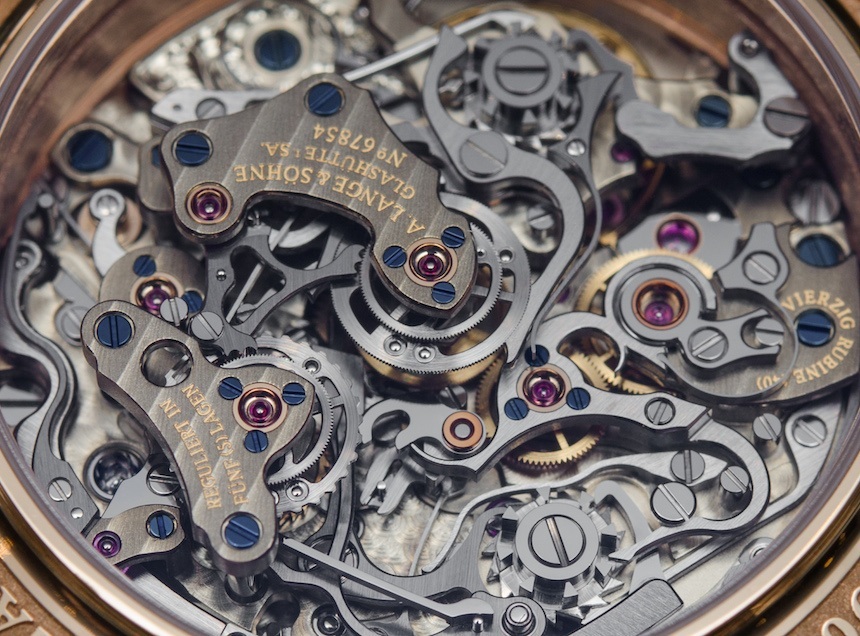
I should also note the rattrapante, or “split seconds” chronograph. These are also sometimes called “double chronographs” – for the latter, see the A. Lange & Söhne Double Split pictured above. This somewhat rare and difficult to assemble complication also happens to be of limited use (in my opinion), but it is often associated with some very complicated (and expensive) watches. The split seconds chronograph adds yet another pusher to a case which is meant to control the starting and resetting of a second chronograph seconds hand. At “rest,” this additional chronograph hand actually “hides” under the main chronograph seconds hand. When activated, it is able to independently measure up to 60 seconds while the main chronograph is running. Thus, split second chronographs offer users the ability to time events up to 60 seconds while the main chronograph is not disrupted.
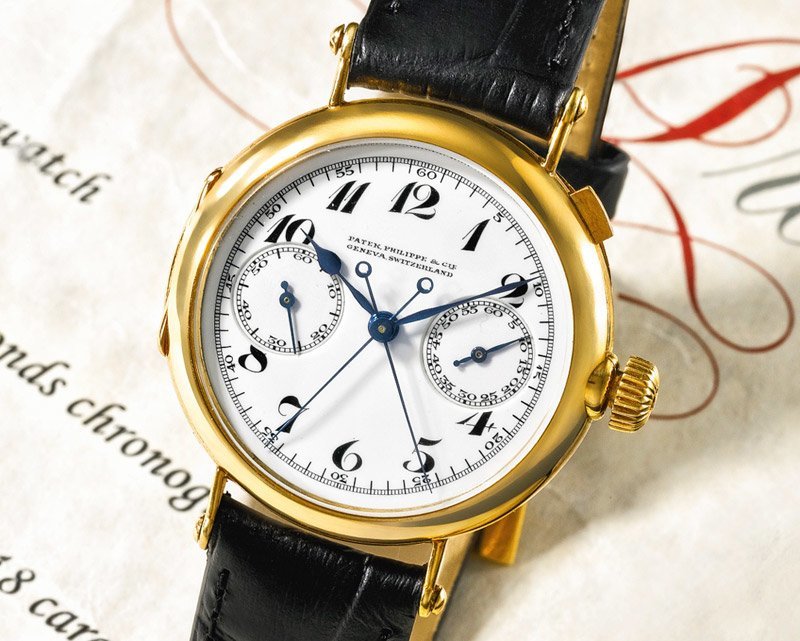
The first rattrapante chronograph wristwatch from 1923. Watch sold by and image courtesy of: Sotheby’s
Apparently, Patek Philippe was the first company to put a rattrapante chronograph into a wrist watch in 1923. However, the split second chronograph as a complication dates back to pocket watches from the 19th century. Perhaps, the most recent innovation in the world of chronographs as related to this discussion is the Audemars Piguet Royal Oak Concept Lap Timer debuted in 2015. In this watch, Audemars Piguet extended the functionality of a split seconds chronograph concept allowing it to be started, stopped, and reset independently.
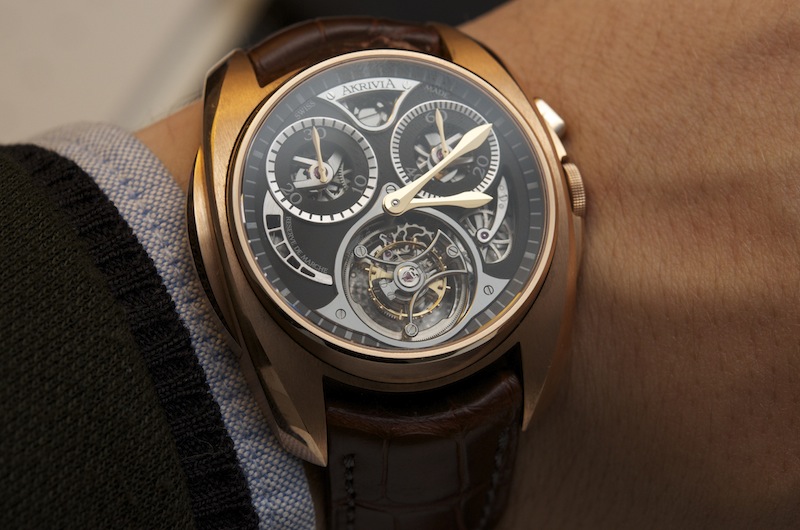
This entire article began with the premise that watch consumers should understand the relative pecking order of chronograph complications in wrist watches. I feel that when watch brands attempt to promote monopusher chronographs over other chronographs, they are misleading consumers. Perhaps as a watch lover, you’ve been privy to these conversations, and perhaps you have not. While monopusher chronographs may have an elegance and sense of longer history to them, they are more basic and less functional chronograph complications as compared to others – namely, the now standard two-pusher chronograph. Knowledge such as this helps you be a better watch customer and helps clear up some of the smoke and mirror tactics some luxury watch brands use in the context of promoting some of their products.

